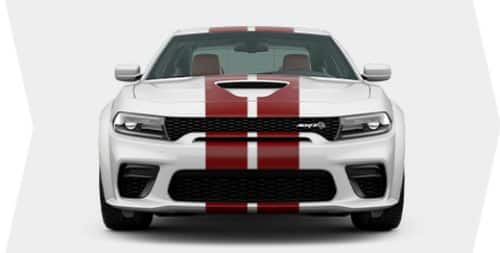
Chevy was a cheap car that delivered incredible performance for a very affordable price in 1957. Although it wasn't the first car with one horsepower per cubit, the 283 horsepower engine was still remarkable. Its low price was also a factor in its popularity. If you're wondering why the 1957 Chevy is still so popular today, here are some reasons. Find out more about this iconic vehicle by reading the following.
It was an automobile that was tailored for the rising middle class
General Motors Company was reorganized in the 1920s under Alfred P. Sloan. The company promised that it would build cars for every purpose and purse. Sloan had seen a growing middle-class market searching for other options than the Model T Ford. With this new group of Americans, GM was on its way towards surpassing Ford. The evolution of GM and its products was possible only by adapting this car to middle-class markets.

It was a vehicle that captured the spirit, culture, and character of the era.
The 57 Chevrolet was a remarkable car at the time. It was a landmark in Chevrolet's history and reflected the spirit of the era, according to John Kraman, director of consignments at Mecum Auctions in Marengo, Illinois. The mid-'50s era was synonymous with youthful spirit, and the car was a perfect representation of that culture.
GM executives wanted a completely new 1957 model car, but production delays prevented the car from being introduced to the market. Ed Cole, a Chevrolet engineer was a big factor in the delays. He dictated changes to car that increased cost and gave it an entirely new appearance. Ed Cole's changes included new dashboards, sealed cowls, and relocation of air conduits into the headlight pods. These changes resulted in a chrome headlight and a larger grille.
It was a car with affordable prices
It was a distant cousin to the modern automobile but a popular choice among the average American. It was far from the modern automobiles, and was developed in 1957. 1957 was a different world. Polio vaccines were just a few years old, and the telephone party line was still a childhood fantasy. The first computers on the market were huge and occupied entire rooms. The majority of European travelers traveled by ship to Europe in 1957. It took the SS United States, which was the flagship of the U.S. Merchant Fleet, four days to travel from New York to Southampton in England.

Americans had a new urban landscape created by the creation of interstate highways. Innovative and stylish vehicles are what manufacturers offered to customers in order to win their business. This was evident in the '57 Chevy. It offered affordable performance and a sporty, elegant appearance. Even had sleek tailfins. It was very affordable and it made a big impact on customers. This was a great opportunity to purchase a Chevy.
FAQ
What qualifications are necessary to become a truck driver mechanic?
This job requires you to be a skilled mechanic, although you do not need any formal training. Your experience is valuable because it allows you to diagnose problems quickly, efficiently and effectively.
You also have an excellent knowledge of diesel technology which will help you to understand what parts are needed to repair our vehicles.
How long is an automotive mechanic apprenticeship
It takes approximately three years to complete an automotive mechanic apprenticeship. It includes two years of school and two years as an apprentice. The first year is used to learn all aspects of the trade including safety procedures and theory. You'll also learn the safe and efficient use of tools during this first year. You'll spend the second year in on-the-job training, where you will gain experience in various trades. These years will offer you the opportunity to attend formal classes.
The last year of your program will be spent earning qualifications and becoming certified. These include NVQs (National Vocational Qualifications), that are given after passing specific industry exams. There are also HNCs (Higher National Certificates), which cover general subjects like management, business administration, customer service, and more. For those interested in pursuing certain trades, City & Guilds certificates are available.
What are the basics of car mechanics?
To be an auto mechanic, you don't have to know much about cars. It's enough to know how to fix things. It's why many people begin to fix things by fitting brake pads or changing tires.
You'll need the ability to read and understand diagrams and to follow simple rules of good practise. It is also important to know how to determine if parts are damaged or need to be replaced.
It's important to remember that you shouldn't attempt to repair vehicles without having received proper training and guidance. This is especially true for expensive components, such as transmissions and engines.
In fact, even though you won't need to know much about cars, you will need to thoroughly know the basics of mechanical engineering and physics. This involves understanding how engines work and how brakes work.
Noting that all situations are possible, it is important to be prepared. For example, you may find yourself working on a vehicle that has been involved in a serious accident. You'll also need experience dealing with breakdowns and accidents.
You should also be open to learning quickly. It is important to be able both to diagnose problems and perform simple maintenance tasks, such as tightening nuts.
What does it take for a mechanic to be a good one?
It takes years of practice and experience to become an expert mechanic. A professional mechanic will teach you how to fix cars.
You will spend time in a workshop learning everything you can about cars. It is important to get familiar with the mechanics of cars and engineering.
And you'll also need to attend auto school.
It's crucial to start as soon as possible. Do not wait to learn automotive technology. Get started now if you are interested in becoming a mechanic.
How can I fix my automobile as a hobby.
Why not make it a hobby if you're interested in cars? You can learn to fix them, buy them parts, and even sell them. This would be a wonderful hobby if you're looking to find something completely different.
It isn't easy to turn it into a full time job. It requires a lot of hard work and dedication. It will also require a large amount of investment.
So unless you have a good reason for wanting to get involved with cars, then it might be best to leave it alone.
Is being an auto mechanic a promising career choice?
There are many exciting opportunities in the automotive industry for people who are driven to achieve excellence. It is important to work hard and learn as much from others as you can in order to succeed in this industry.
Because you will be spending most of your time communicating with customers and employees, you will need excellent communication skills. You should also be willing to travel and work long hours, making commuting difficult.
If you are interested in a career working in automotive, then consider attending classes at community colleges. Many schools offer programs specific to students interested in sales, auto repair, or customer service.
Mechanical engineering is a good choice if you are interested in pursuing a degree. You can earn a bachelor's in as little four years.
Many companies will hire students straight out of college. So, it is wise to begin searching for employment while you are still able to study part time.
After you have completed your education, you will likely need some training to be able to work as an automotive technician.
This means that you must pass the Automotive Service Excellence exam. This test covers topics like engine maintenance, brakes system, suspension, and many other subjects.
Once you've passed the ASE test, you can apply for a license issued by the National Institute for Automotive Service Excellence.
A license permits you to repair private vehicles. You'll get compensation based on the amount of services you perform.
It is important to remember that not all states require licensing. You will need a license if you want to work in a different state.
Some states don't issue licenses until after completing a certain amount of training. This could be you.
How can I prepare to become a mechanic apprentice?
It is essential to understand what you are getting into. You must understand the workings of cars. This way, you know where to start when you go on your first day at the garage.
You should also know how to fix common problems such as tires or broken lights.
This should help you learn how to diagnose issues and repair them yourself.
It is also important to know how the different pieces fit together in order to put them together again.
Finally, it is important to know how tools can be used safely and efficiently.
These things will enable you to be a competent mechanic.
Statistics
- 52% of Mechanics in the United States think their salaries are enough for the cost of living in their area. (indeed.com)
- Apprentice mechanics earn significantly less hourly than mechanics who have completed training, with a median wage of approximately $14.50 an hour, according to PayScale. (jobhero.com)
- The U.S. Bureau of Labor Statistics (BLS) reports that the job outlook for automotive service technicians and mechanics is expected to decline by 4% from 2019 to 2029. (indeed.com)
External Links
How To
How to correctly diagnose your vehicle for repairs
The symptoms of your vehicle are the first thing you need to look at in order to determine whether it is in dire need of repairs. Then, follow these steps to diagnose your vehicle properly.
-
Check engine lights. The dashboard light indicators, including the engine light, oil pressure gauge, battery light indicator, coolant temperature gauge and RPM gauge, should be checked. If they have been flashing for more days than usual, it could be a sign that something is wrong with the vehicle.
-
Pay attention to the treads on your tires. Tires that are worn can cause issues with handling and braking. The treads of the wheels should be inspected as well. You should ensure that they are clean and smooth. The best way to do this is to remove the wheels and take them off. Use a flashlight to see how well the treads are worn.
-
You should always monitor the level brake fluid. You must keep track on the level of brake fluid in your vehicle. This will ensure your brakes function properly. Low brake fluid levels can cause brake failure when you apply pressure.
-
You should test the suspension system. It is common for vehicles to have a suspension system which absorbs shocks or vibrations. It allows for better control, smooth acceleration, and deceleration. A suspension problem can cause your vehicle to feel wobbly and shake uncontrollably. Try putting some weight on your front or rear axle to determine if you have a suspension problem.
-
Examine the steering column. The steering column is used to link the steering wheel with the rest of vehicle's components. Accidents often damage steering columns. It is recommended to replace any steering column that feels loose, or shakey.
-
Observe the exhaust pipes. Exhaust pipes help move gases from the combustion chamber to the atmosphere. Exhaust pipes that are cracked or leaking can allow harmful fumes to enter your cabin. It is also important to repair any bends in your tailpipe immediately.
-
Take a look under your hood. To check for unusualities, look under the hood. Fluids could be leaking from your engine. In addition, if you notice an unusual smell coming from your engine compartment, you should contact a professional technician.
-
It is important to inspect the air filter. Your vehicle's air filter collects dust and debris from the outside environment. Your vehicle will run less well if it has a dirty filter. Replace your air filter regularly.
-
Check the fan belt. Your vehicle's fan belt connects the engine to the transmission. The engine will not turn if the fan belt breaks. It is easy to replace the belt. All you need to replace the belt is a screwdriver with pliers.
-
Check the radiator hose and hoses. The radiator hose carries water from the radiator to the engine. It can become cracked or damaged and leak hot liquid onto your engine. To repair the hose, you will only need to use a pair needle-nosepliers and a wire brush.
-
Make sure you have the windshield wipers checked. Windshield wipers use electricity to clean away snow and rain. If they stop working, they could leave streaks on your window glass. Change the washer fluid to fix the problem.
-
You should inspect the cables. Batteries provide power to electrical systems inside your car. Before you change batteries, disconnect the positive cable. Failure to do so can damage your alternator.
-
Check the headlights. The headlights provide illumination for the road ahead. Poor visibility can result if the headlights don't function properly. Inspect the bulbs for signs of burnt out.
-
Always check your lights. You can warn other drivers if you approach them at night. It could cause distraction and even lead to an accident if it doesn't work.
-
Inspect your brakes. Before you have a collision, brakes slow down your car. If they aren't working correctly, you could lose control of your car and crash.
-
Make sure to change the oil. Keep your engine lubricated with oil. It helps keep metal parts from getting too worn down. It is recommended to change the oil each month.